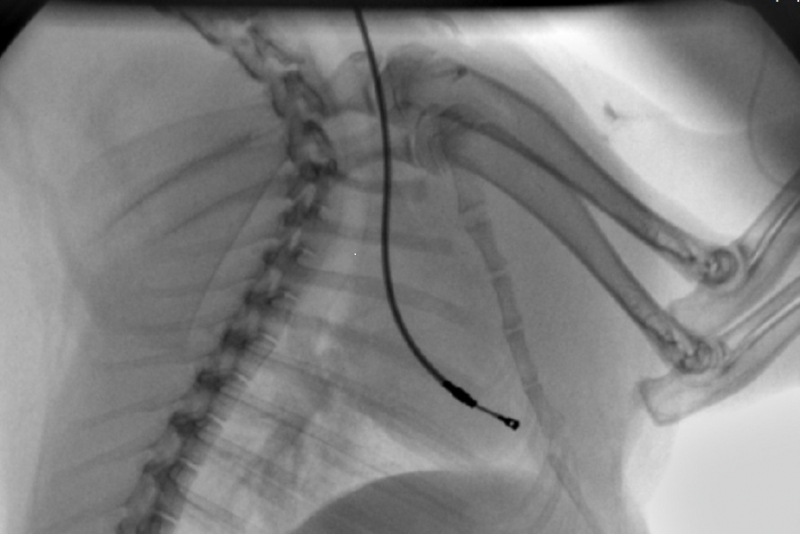NOVEL CARDIAC PACING BIOMODEL IN SMALL MAMMALS
Background: Animal models of cardiac pacing are beneficial for studying the pathophysiology of artificially paced heart rhythms, treatment of arrhythmias, or testing novel devices and their potential complications. Availability of these models is limited and requires extensive resources.
Objective: We report a new experimental cardiac pacing biomodel in small mammals which can be applied to a wide range of cardiac research.
Methods: Five New Zealand White Rabbits (mean weight 3.5kg) were sedated and kept under general inhaled anesthesia throughout the experiment. The jugular region was dissected and a single pacing lead was introduced via the right external jugular vein. Under fluoroscopic guidance the lead was advanced to the apex of the right ventricle where it was stabilized with passive fixation. A pacemaker was then attached and placed in the subcutaneous pocket.
Results: The rabbit’s anatomy is favorable for the lead placement and the pacemaker implantation was successful with good healing. During the follow-up, mean sensed myocardial potential was 6.1 mV (min 2.8 mV, max 13.5 mV) and the mean lead impedance measured was 604 Ω (min 468 Ω, max 819 Ω). Pacing threshold was initially 0.8 ± 0.5 V and increased to 2.1 ± 0.5 V after 6 months of follow-up (P=0.04).
Conclusion: The presented study is the first to report of a successful small-mammalian model of full-size transvenous cardiac pacing. Although the tissues are small and fragile, the human-size instrumentation can be used safely with adjustments in the implantation procedure. This novel biomodel is suitable for range of applications in studying response to cardiac pacing and development of electronic devices.


